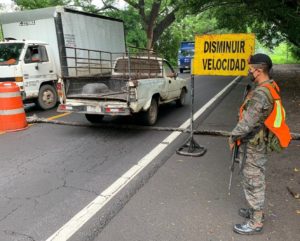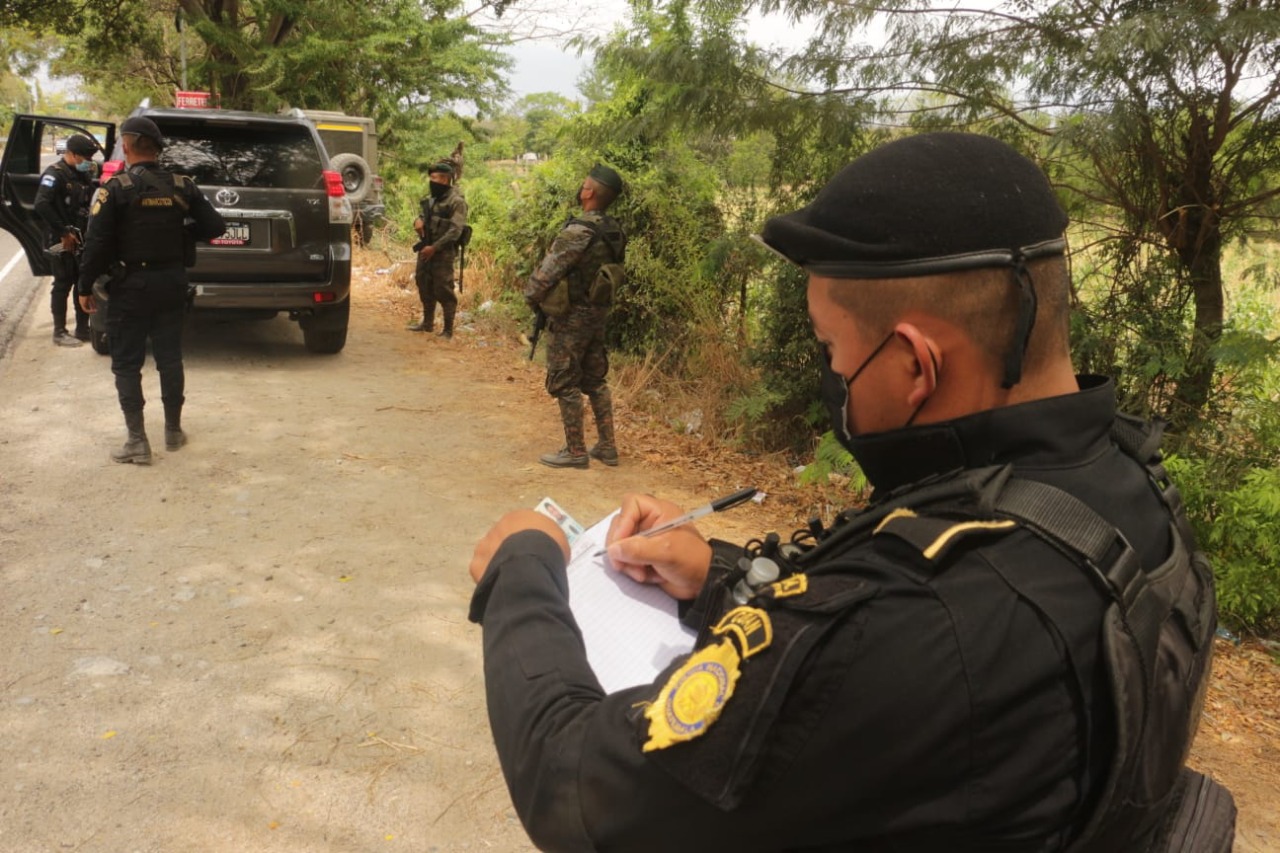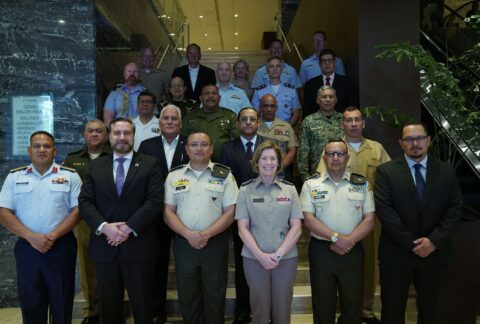The Guatemalan National Civil Police (PNC) and Army detained and deportedmore than 120 Salvadoran gang members under the Integral Tactical Operational Plan 13-2022, which allows for specialized unitsto deploy along the common border with El Salvador, Guatemalan President Alejandro Giammattei said via Twitter on June 16.
“We deployed the Army and Police not only thinking in terms of traditional customs stations, but border stations and roads as well,” the president said. “To date, we’ve sent back a total of 125 identified gang members.”
Giammattei said that police officers and soldiers have been patrolling in the municipalities of Santa Rosa, Chiquimula, Zacapa, Jutiapa, and Escuintla since the Salvadoran government decreed a state ofexception on March 27, to contain gang violence.
Víctor Hugo Martínez, a Guatemalan criminology and criminal policy expert, told Diálogo that the security strategy implemented to curb the entry of gang members has been positive. “The police set up checkpoints at various points on national highways and in the metropolitan area […], and the Office of the Attorney Generalconducts raids to execute arrest warrants for foreigners who carry out illicit activities in Guatemala,” he said.
He also highlighted the three public security models the PNC implemented: the Integral Community Security Police Model (MOPSIC), based on the community policing philosophy, and focused on the attention and close relationship with the community to promote security and peaceful coexistence; the tourism police, which is responsible for protecting both domestic and foreign tourists; and the Immediate Reaction Group Lobos (GRIL), which received special training in urban operations to prevent crime.

The security forces of Guatemala and El Salvador are also working together. On April 12, representatives of the ministries of Security and Defense, the National Civil Police, and the Armed Forces of both countries participated in a Bilateral Meeting for Security and Development, to improve the security climate in both countries and strengthen communication to face the common challenges of combating organized crime.
Guatemala also strengthened cooperation with security forces in Belize, and through Interpol was able to locate and deportSalvadoran nationals Erick Rogel, alias Liro Agap; and Eduardo Martínez, alias El Gato and/or Gatillo, members of the Barrio 18 gang, the PNC reported via Twitter.
Inner workings
Tiziano Breda, a Central America analyst at the International Crisis Group think tank, noted that gang members fleeing El Salvador is nothing new, as the inner workings of gangs in both countries help those in a “difficult situation,” who often take refuge in a neighboring country.
“The gang members who leave are mainly of two types: those who live in border areas and know the blind spots, and those who can afford it because they have a certain status in the gang and resources to undertake the journey,” Breda told Diálogo. “It’s difficult to gauge how many gang members are fleeing and how many of those captured already had a presence in Guatemala or Honduras. It’s even more difficult to establish a direct impact on the security situations within the countries.”
Authorities are capturing gang members in various illicit situations. Among those: the use of public transport to attempt to cross borders unnoticed. Gang members also try to evade authorities by covering their tattooswith makeup. This was the case of four Salvadorans who were traveling hidden in a truck, and whom the Guatemalan PNCdetained in the department of Quetzaltenango, near the Mexican border, Guatemala’s Interior Ministry said.
Between January 1 and May 31, 2022, according to data from the Guatemalan PNC’s General Sub-Directorate of Criminal Investigation, authorities have captured 322 gang members: 270 from the Barrio 18, 50 from Mara Salvatrucha, and two from the Whitefence 13 gang. Eighty four percent of the apprehensions were made in the department of Guatemala and 16 percent in the rest of the country, the Interior Ministryreported.









